Traffic management
With traffic volumes increasing each year we aim to make the best possible use of the existing road network using traffic management techniques.
These vary, depending on the location, but the following are the most commonly used:
Traffic Regulation Orders
We have the authority to introduce traffic regulation orders such as one-way roads, limited entry to selected areas, parking and loading restrictions.
When introducing a traffic regulation order, we must by law, publish a notice advertising the effect of the proposals and invite objections. An order cannot be introduced until all objections have been satisfactorily resolved. Once an order has been brought into force we are responsible for the enforcement and maintenance of any associated road signs and markings.
Encouraging alternatives to the private car
In conjunction with other bodies such as Nexus, the bus operators and Sustrans, we are attempting to make environmental improvements by encouraging people to travel on other forms of transport such as buses and trains and by cycling or walking. Examples of schemes to encourage these forms of transport include:
- Park Lane Interchange - linking bus and metro routes
- Frequent bus services with modern and more practical vehicles
- Durham Road Super Route (runner up for Queensbury Infrastructure award)
- A network of cycleways throughout the area
- Other multi-purpose routes for both pedestrians and cyclists
New measures to enforce traffic restrictions
Sunderland City Council have the opportunity to apply to the Department for Transport (DfT) for new civil powers to enforce moving traffic regulations under Part 6 of the Traffic Management Act 2004 (TMA). This means that the City Council would be able to introduce measures to enforce certain types of moving traffic restrictions, for example cycle lanes, yellow box junctions, banned turns and no entries in locations where road users regularly ignore them.
For more information and to complete an online survey please click on the button below.




